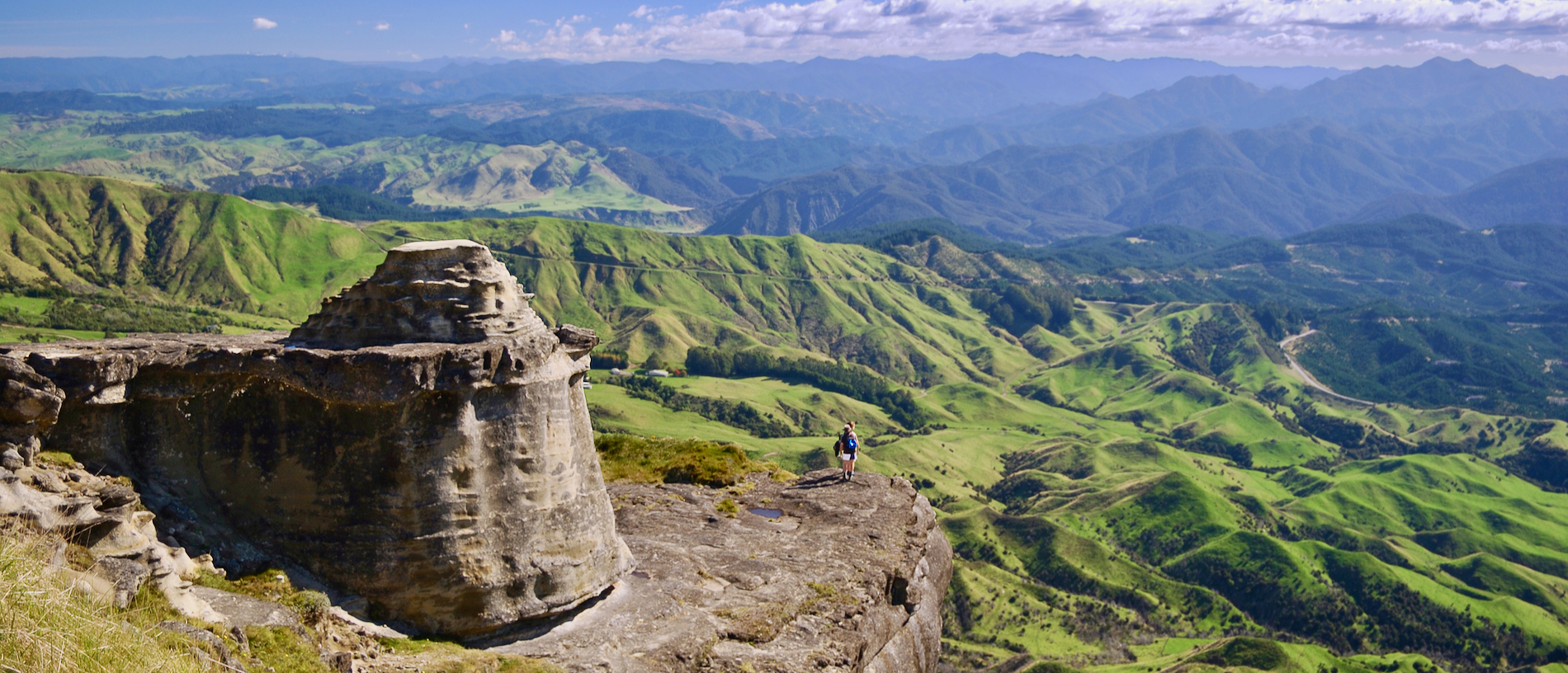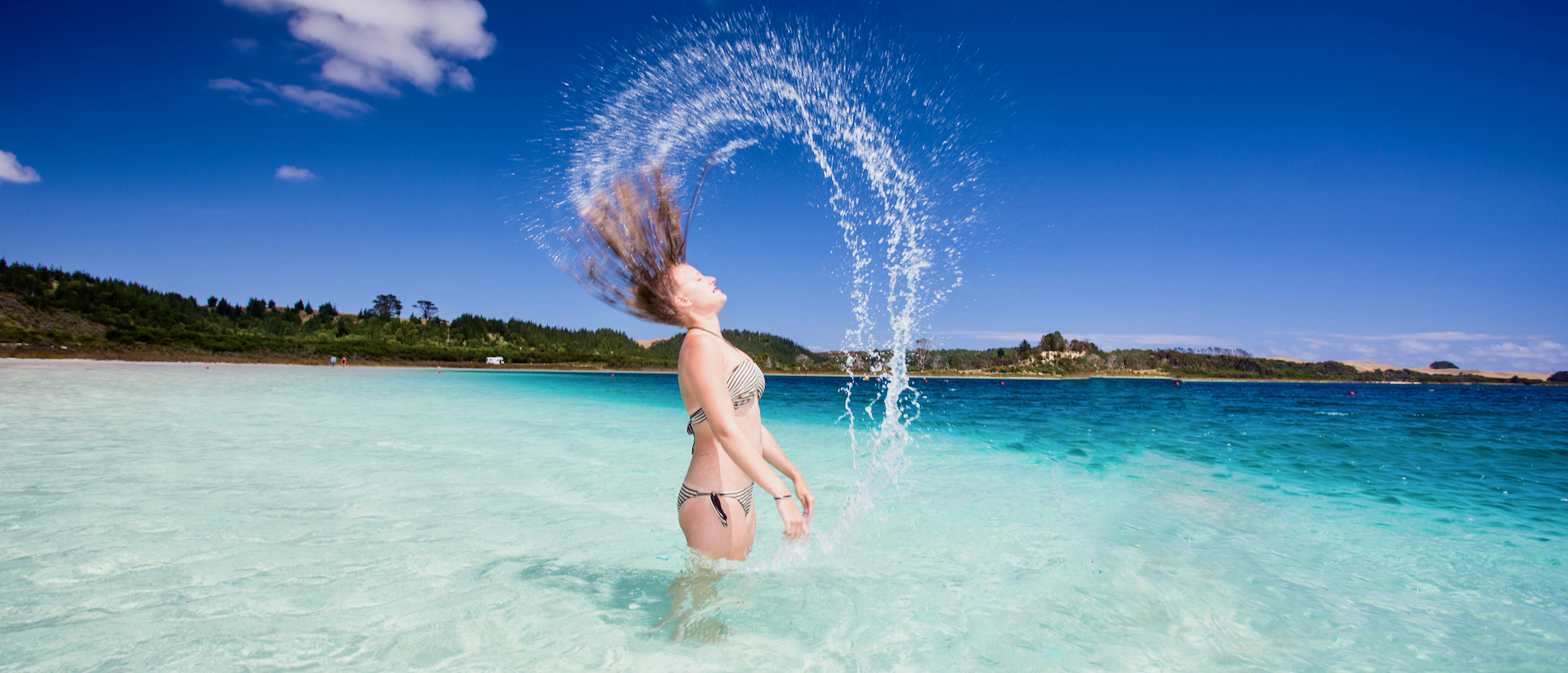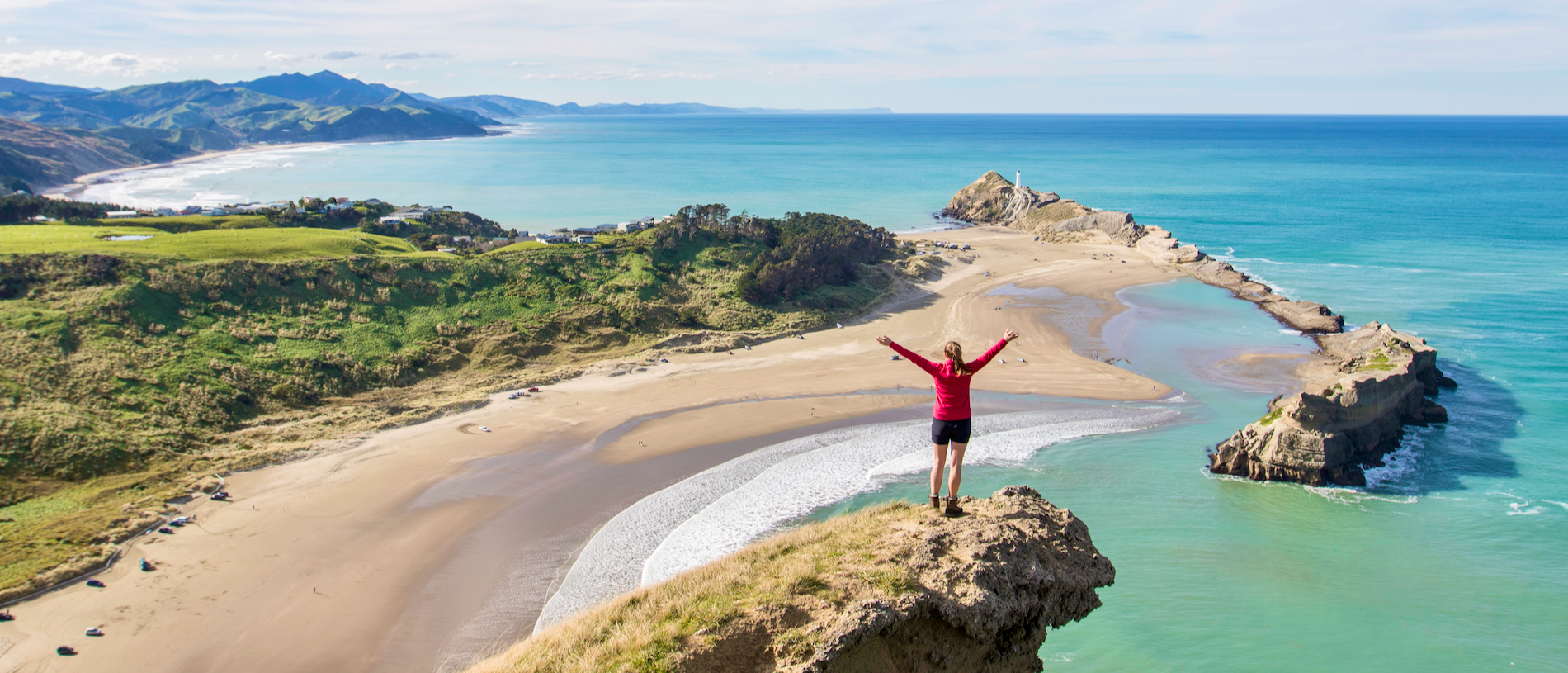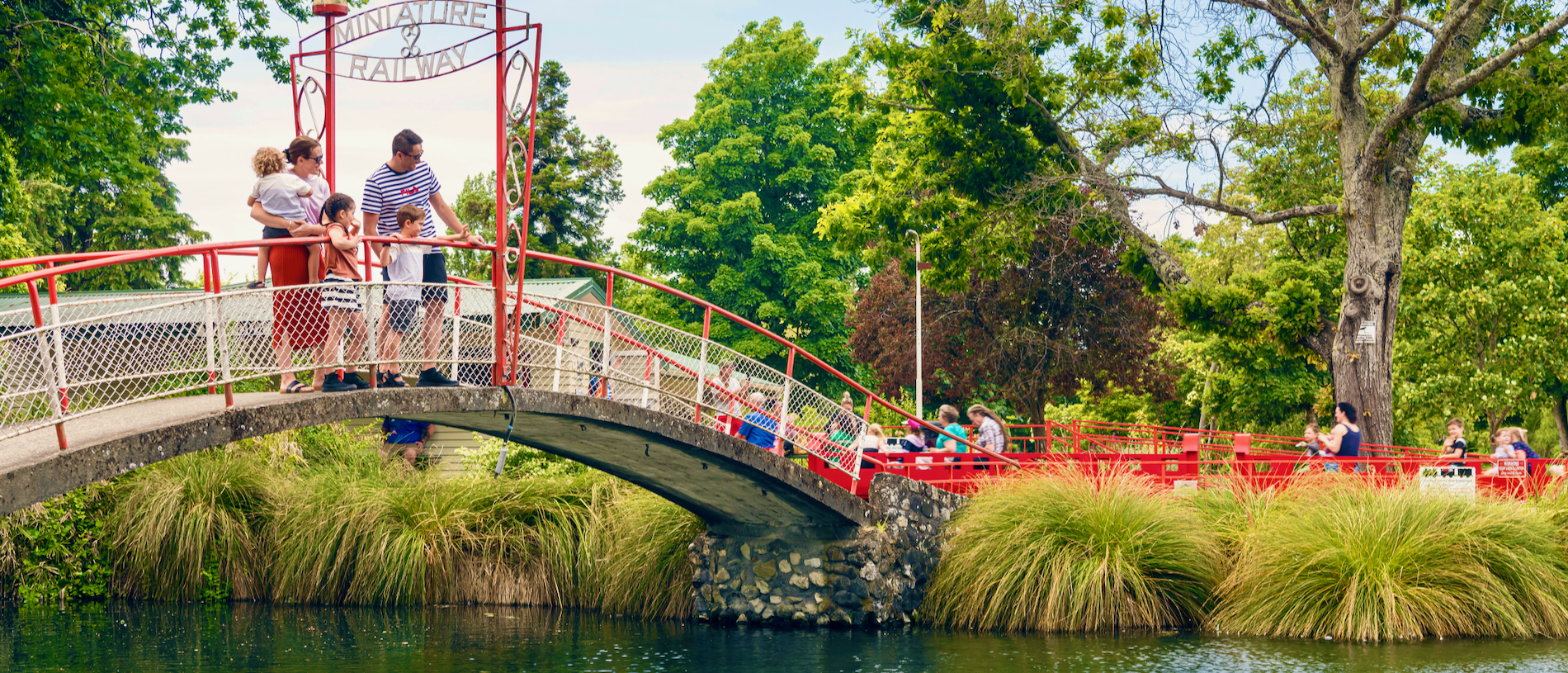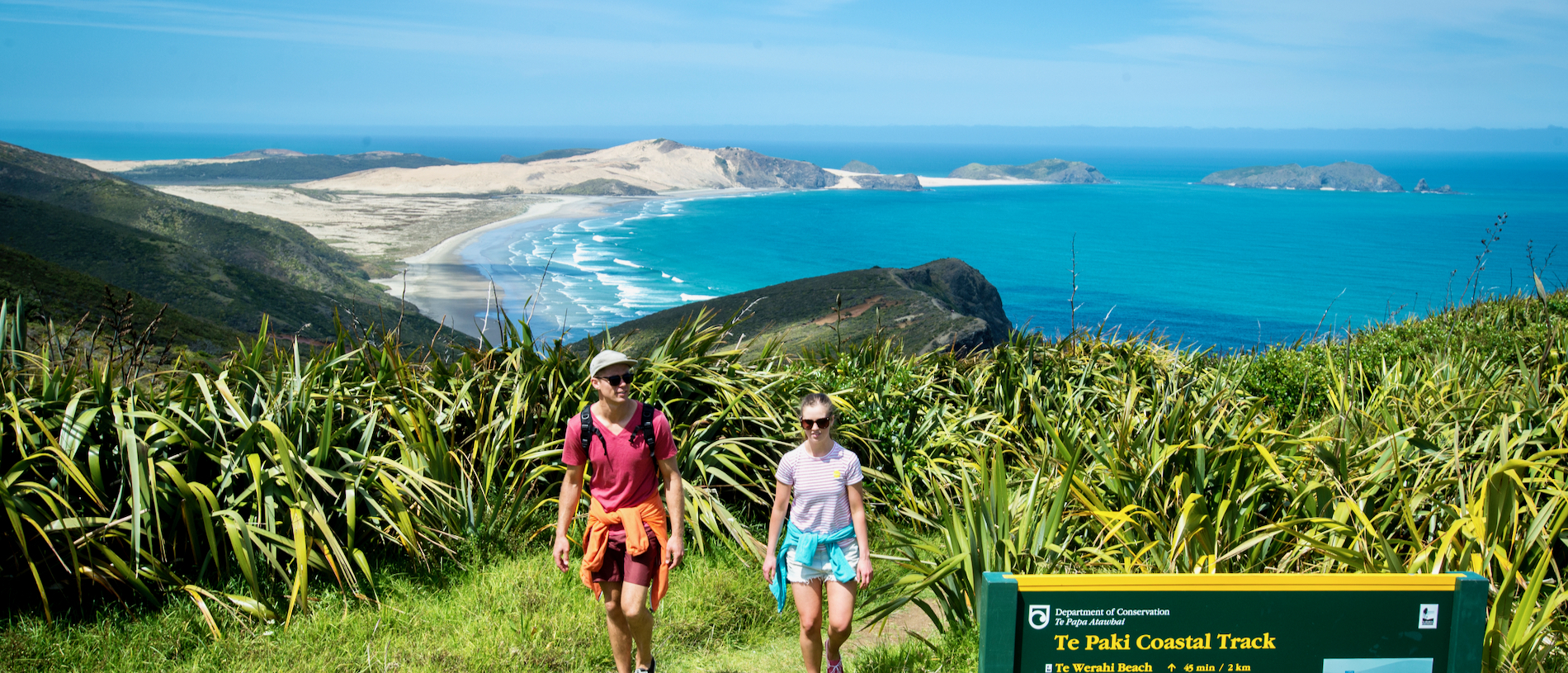
Don't miss these six Kiwi Gems on the Twin Coast Discovery Highway
This epic road trip covers the best of Northland – running from Auckland City to Cape Rēinga, and taking in both dramatic coastlines. Find six Kiwi Gems to discover along the way.
1. Auckand's Regional Parks
From ancient lava flows to tidal estuaries and pōhutukawa-fringed coastlines, there are many landscapes to explore in the 27 regional parks around Auckland.
From Ambury Farm on the shores of the Manukau Harbour with its interactive animal encounters to the pest-free environment of the open sanctuary at Shakespear at the tip of the Whangaparāoa Peninsula, recreational opportunities abound.
At the mouth of the Pūhoi River, Wenderholm – perhaps one of the prettiest parks – has one of Auckland's best examples of mainland coastal forest, Tāwharanui boasts some of the most beautiful white-sand beaches, and the Whakakaiwhara Peninsula in Duder Regional Park provides 360-degree views of the Hunua Ranges and Hauraki Gulf islands.
Bushwalks, beach walks, swimming spots and secret coves can be found in parks across the region, and best of all, they’re free and available for everyone to enjoy.
2. Sculptureum, Matakana
Experience sprawling world-class sculpture gardens, multiple art galleries and a fine dining restaurant on the outskirts of Matakana.
Sculptureum is home to three beautiful sculpture-filled gardens and six indoor galleries featuring the works of world-famous artists including Picasso, Cèzanne and Chagall. Each of the six galleries has artworks centred around a different theme – from glass to recycled or modern abstract.
Over 1.5km of flat paths wind through the outdoor gardens, which bristle with sculptures, live animals and colourful plants that evolve with the seasons.
Alongside the more than 700 local and international artworks is an 11-acre vineyard, producing Sculptureum’s very own wines which can be enjoyed with the superb cuisine at Rothko Restaurant.
3. Mount Parihaka, Whangārei
Rising 241 metres above Whangārei, Mount Parihaka is a significant Māori pā site, with spectacular views across the city.
There are several well-maintained walking trails that take you through the 143-hectare native bush reserve and up to the summit (or there is road access for an easier option).
Explore groves of mature kauri trees, discover an abandoned gold mine, wander alongside the Hatea River, or bring your mountain bike to tackle some of the park’s trails.
But most people come for the view. At the summit of Mount Parihaka as well as the large obelisk of Whangārei’s War Memorial and a beautiful rock carving representing the mauri or ‘life force’ of Parihaka, you can soak in the panoramic vistas across Whangārei Harbour.
4. Urupukapuka Island, Bay of Islands
Imagine whiling away the day on a secluded paradise island.
In Māori, the Bay of Islands is known as Ipipiri, which means ‘many places.’ One such special place is Urupukapuka Island. This pest-free, 208-hectare island is the largest in the Bay of Islands.
Urupukapuka Island is ringed by dreamy white sand beaches, warm, clear water for snorkelling, beachside campsites and walking tracks winding through long grass.
At Otehei Bay you can hire kayaks, or grab a bite to eat from the licensed café.
During the summer months, you can catch a passenger ferry from Paihia and Russell, or you can visit by water taxi or private boat.
5. Te Paki Coastal Track, Cape Rēinga
Following the rugged coastline of Cape Rēinga, the Te Paki Coastal Track takes in some of the best beaches in the Far North Region.
A 48-kilometre route that takes between three to four days to complete, the Te Paki Coastal Track provides the opportunity to immerse yourself in an incredibly scenic and spiritual part of the country.
Take in deserted white-sand beaches, pōhutukawa-clad coves, dramatic headlands and sites of cultural and archaeological significance.
Beginning at Spirits Bay on the north-eastern coast, the track crosses past Cape Rēinga Te Rerenga Wairoa and follows the west coast down to Te Paki Stream.
6. Kai Iwi Lakes, Dargaville
Summer camping at Northland’s Kai Iwi Lakes is a quintessential Kiwi experience.
Just north of Dargaville, the three lakes at Kai Iwi – Taharoa, Waikere and Lake Kai Iwi – are some of New Zealand’s largest dune lakes, formed by the accumulation of rainwater in the white sand.
At up 37 metres deep, Lakes Taharoa and Waikere are also the deepest dune lakes in the country. But with warm, shallow edges, the Kai Iwi Lakes are ideal for kayaking, water sports and for kids to play.
They’re also great for fishing and gathering, with abundant rainbow trout, kōura, and freshwater mussels.
If you’re looking for a more energetic alternative to lakeside lounging, head to the nearby Ripiro Beach. A 107km-long stretch of sand running from Pōuto in the south to the Maunganui Bluff in the north, it is the longest drivable beach in New Zealand. Best suited for 4WD vehicles, you can drive along Ripiro Beach within two hours of low tide.

